How to Winter Sow Seeds Outdoors
{{gwi:2110438}}Image by: gardenweed_z6a
Milk jug containers
How to Winter Sow Seeds Outdoors
It really is very easy to do.
First, let me give you a little background as to why I sowed the
seeds during the Winter. I live in a very small house, a cottage
actually and I simply do not have room for a light set up, also any
window space I have must be fought from the cat and "Prinny" likes
to look out on the street and watch the world go by, so I have to
give her a windowsill. She's a good cat and deserves her place in
the sun.
I got hooked on seed trading, and as you all know seed trading is
like Pokeman......you gotta have 'em all. I had tons of seeds, I had
them all. Though I am not a novice at gardening I am a novice at
growing seeds, this was my second season doing so. Because of my
lack of experience with growing seeds, and not having a light set
up, I always traded for "easy to grow" seeds: I had to start them in
the windowsill or out on the patio in flats during Spring and Summer
which I did the previous year with good success too.
I was thinking a lot last Winter about how I was going to start all
these seeds, I needed an easy way out. I knew that many seeds needed
to be pre-chilled, and I knew that many plants reseed and germinate
outdoors without our intervention. I thought about this for a few
days and put 2+2 together. I would sow them into flats, and take
them outside for the Winter, if all went well then they would
germinate in Spring.
I am a true believer in "recycle and reuse". I had been saving my
take-out containers from the Chinese restaurant (not those typical
white boxes that have a metal handle and white rice inside), I was
saving the foil pans that have a separate clear plastic lid, they're
usually round or rectangular. These containers were just
perfect.....plus I didn't have to go to a store and open up my
wallet (hmm, look at all the moths fly out), if I can get away
without having to lay down a buck I will. I did need soil though and
so I went to Walmart and got their brand which was the cheapest I
could find.
Seed selection:
Take a look at a seed catalogue, most will have some sort of
notation about a seed's germination requirements, or you'll pick up
a few clue-in phrases. Look for these terms:
- Needs Pre-chilling (freeze seeds, refrigerate seeds, stratify
for x amount of day or weeks) - Needs Stratification
- Will Colonize
- Self Sows
- Sow outdoors in early Autumn
- Sow outdoors in early Spring while nights are still cool
- Sow outdoors in early Spring while frosts may still occur
- Hardy Seeds
- Seedlings can withstand frost
- Can be direct sown early
- Wildflower
Weed (such as butterfly weed, joe pye weed, jewel weed)
Look for Common Names indicating a natural environment:
- Plains
- Prairie
- Desert
- Mountain
- Swamp
- Field
- River
Look for names that might indicate an origin in a temperate
climate:
- Siberian
- Chinensis
- Polar
- Alpine
- Orientale
- Canadensis
- Andean
- Russ (indicating Russian origin)
Think about your own garden, and your neighbors' gardens too. Do you
find plants that have volunteered each spring and shown up as
seedlings that you didn't sow? These are very good choices. (let's
say that your orange marigolds have returned in Spring as volunteer
seedlings.......you can then be pretty well assured that gold, or
lemon, or African or French varieties will reseed for you too, when
it comes down to it a marigold is a marigold is a marigold).
I like Park's Seed catalogue, it has a great germination table right
in the middle of the catalogue. They have a numbered guide
indicating the best germination requirements for seeds. I took a
yellow highlighter and went down that numbered list and highlighted
all the numbers that would be appropriate for Winter Sowing, then I
carefully went through their list of seeds and highlighted the
varieties that corresponded to the correct numbers. This is how I
chose which varieties I would Winter Sow. A lot of catalogues, not
just Parks, will have a germination table, or some information about
germination, look at them, study them, and learn.
To make a flat you take the foil container (of course it's clean,
washed in hot soapy water) and a paring knife. Stab a few slits in
the bottom of the pan, this is for drainage. Now fill the pan with
soil to about a half inch from the top. Give it a real good drink
and let it drain. I do this in my kitchen. (I have a sprayer on a
hose at the sink and I use this for the watering, works well and
doesn't gouge out holes in the soil). After the pan has drained sow
your seeds and pat them down. Cover them with more soil to the
correct depth if necessary. I like growing plants with tiny, tiny
seeds, they're really just the very most easiest to sow. Sprinkle
them on top of the soil, pat them down, and that's that.
Now you need to put the lid on BUT FIRST.........and this is the
very most important step.......take the knife and poke several slits
in the clear plastic lid. This is for air transpiration. Think about
it, you're making a little mini greenhouse. If you don't vent the
air that is heated by the sun you'll cook your flat and the seeds
won't germinate. You've baked them to death. Okay, put the lid on
secure by folding down the foil rim. Now the seeds are sown.
Uh oh.......back it up, I forgot a step that you may wish to use:
labeling. I didn't label mine as I like surprises, however this
concept may pop the heads of gardeners who enjoy having everything
"just so". Get some freezer tape, or any tape that you know will
work well after being frozen. Pull off a piece and stick it to the
bottom of the flat. Write the variety name on it with a laundry
marker (or a sharpie). You can do this before or after sowing, if
you do it afterwards make sure you wipe the bottom of the flat well
as freezer tape doesn't really adhere as good as you'd like to a
damp surface. Label the tape before sticking it the bottom of the
flat. The label is on the bottom of the flat because the sun can't
bleach it down there. I haven't yet found a marker that won't bleach
out in my strong Long Island sun.
All right, the flat is now sown and covered (with little slits in
the top, yes? don't forget!!). Now take it outside to somewhere it
will be safe for the winter. I put them on a picnic table top away
from my curious puppy. I learned my lesson, I lost a flat of
daylilies (the first I sowed this way) because I put them on the
ground under a bush and the puppy found them and thought the flat
was a toy, and she promptly killed it by shaking it to death. After
that all the flats went up on the table out of her reach. Sad loss, but an excellent lesson.
Now you just wait it out. When the weather warms the flats will
freeze and thaw repeatedly as winter gives way to spring. This
action of freezing and thawing out helps loosen the seed coat.
You'll often see the term "nick or file seeds prior to sowing" in
germination databases: this is to duplicate Mother Nature's work (now you won't have to do that anymore).
Amazingly, just when winter is about to break, and you're still
getting nightly freezes, the first of your flats will begin to
germinate. When I saw this I thought that the seedlings were goners,
but they thrived. The seeds know when it's safe to come up, it's
part of their genetics. Now is the time to check the moisture in the
flats, on an above freezing day open them up and if they look like
they need a drink give them one. The excess water will drain away. Don't forget to replace the lids tightly.
As your seedlings grow start widening the slits in the covers, once
a week or so make the slits a little bit bigger, eventually you'll
have more open areas than covered and you'll be able to transplant
the seedlings into the garden because they are completely hardened
off. I have put in seedlings that barely had their first set of true
leaves and they thrived in the ground.
After transplant care is typically the same as for indoor sown
seedlings. They need a drink and just a little bit of food: 10%
strength after their first week in the ground, then increase slowly
as the season progresses. After about eight weeks and a few feedings
your seedlings will be able to take a full strength feeding.
Alternative seed flats:
I have used plastic milk jugs and 2 liter soda bottles too, just cut
around the middle almost all the way through. Make the drainage
slits. Fill with dirt, water, drain, sow, cover with more dirt (the
same procedure as above). Tape the cut edges together and simply
remove the cap for air transpiration.
Cardboard orange juice or milk containers can be used with a baggie.
Cut them in half, horizontally or vertically, make the drainage
slits and sow your seeds by the same method above. Slip the flat
into a baggie, tie it closed with a twist tie or a knot and use the
knife to make a few slits for air transpiration, put a few slits in
the bottom of the baggie for drainage.
Coolwhip tubs: Make the drainage slits, sow your seeds as above.
Take a scissors and cut out the center of the lid, leaving about an
inch around the inside of the rim. Put a piece of saran wrap over
the tub, put on the lid. This holds the saran wrap "window" snugly.
Take the knife and make some slits in the saran wrap for air
transpiration.
+++++++++++++++++++++++++++++++++++++++++++++++
So that's how to do it, if I remember something that I have
forgotten I'll post an addendum, but I think I have it all covered.
The major principles of outdoor Winter Sowing are selecting the
appropriate seeds for your plant zone, and providing adequate
drainage and adequate air transpiration. Do all these and you'll
have a success.
Did all my flats germinate? NO! I had about eighty or so of these
made and I had eight not germinate. Was it the seeds? Was it the
method? Was it me? I don't know. But I did have around seventy flats
that did germinate. Outside!
I forgot to mention that I also used four kiddie pools. These were
used the summer before as container gardens (lots of soil, lots of
big slits for drainage). I simply direct sowed these and left them
uncovered. They got snowed on, the snow melted, it rained while the
base of the kiddie pools were still frozen and the rain didn't
drain. They all were frozen with ice at least an inch
thick.......aarrgghh, panic Panic PANIC....I couldn't do anything
about it. When the warmer weather finally came the pools thawed and
drained and the seeds came up! YEAH!
That's it. As you see it's not hard to do at all and I sowed these
flats at my leisure throughout the Winter. Everyone talks about
going bonkers in January and February because they can't get out and
do any meaningful gardening, and there are only only a few varieties
of seeds which can be successfully sown this early
indoors....frustration and gardening fever sets in. While all the
other gardeners were chomping at the bit I was being self indulgent
and playing with dirt and mud and seeds at my own lazy bones pace.
I took a leap of faith doing this, I kept the faith, and I was
rewarded. I believe in this method, it works, it really truly works.
Too much emphasis has been made on indoor sowing under lights. It
takes up time, it takes up space, white flies take to the air, damp
off kills your effort, your seedlings, your spirit. Did I forget to
mention that there was NO EVIL DAMP-OFF? The freezing action killed
whatever nasties that are in the soil that cause young innocent
seedlings to perish so tragically and so sadly. And it is sad, you
take a lot of time and care in your efforts, the seedlings are
sometimes almost like our "plant" children. It really is depressing
when a flat of seedlings doesn't make it.
I encourage everyone to try this Winter Sowing method, if you want
to hold back some seeds the first time you try it that's great. Save
some seeds to sow indoors of a variety you have placed in a Winter
Sown flat, compare the differences in the seedlings, and then
compare plants when they mature. Learn from what you observe.
Make your life and garden easy, let it flourish with flowers,
grasses, vines, bushes, trees, and vegetables, you thought you
couldn't even consider trying before now.
Good luck to you all!
Trudi Davidoff
(copyright 2000)



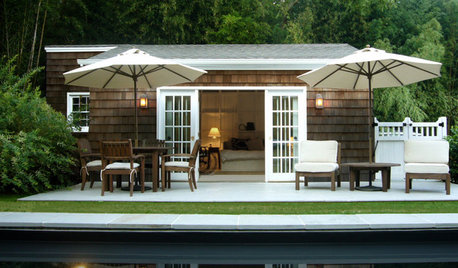
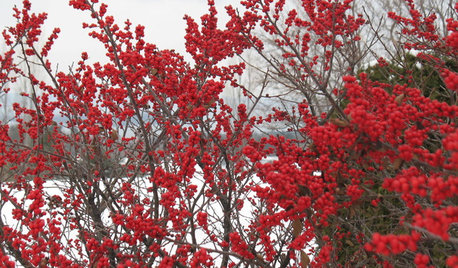
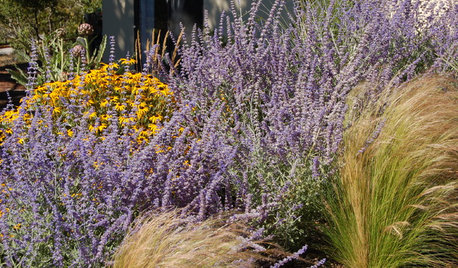
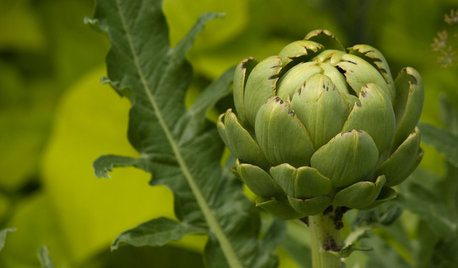

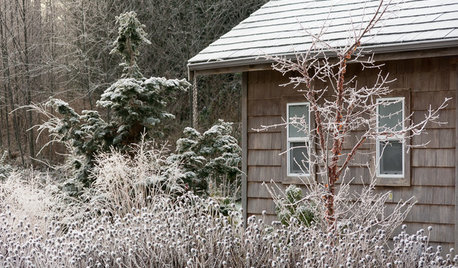
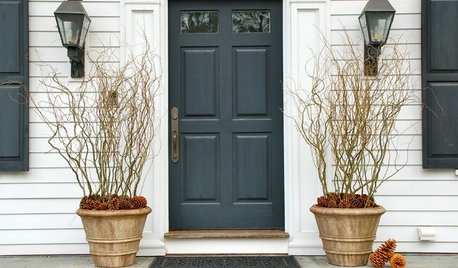



Related Discussions
Seeds
Q
How To Winter Sow Seeds Outdoors
Q
Seed sowing and winter sowing
Q
How to Winter Sow Seeds Outdoors
Q